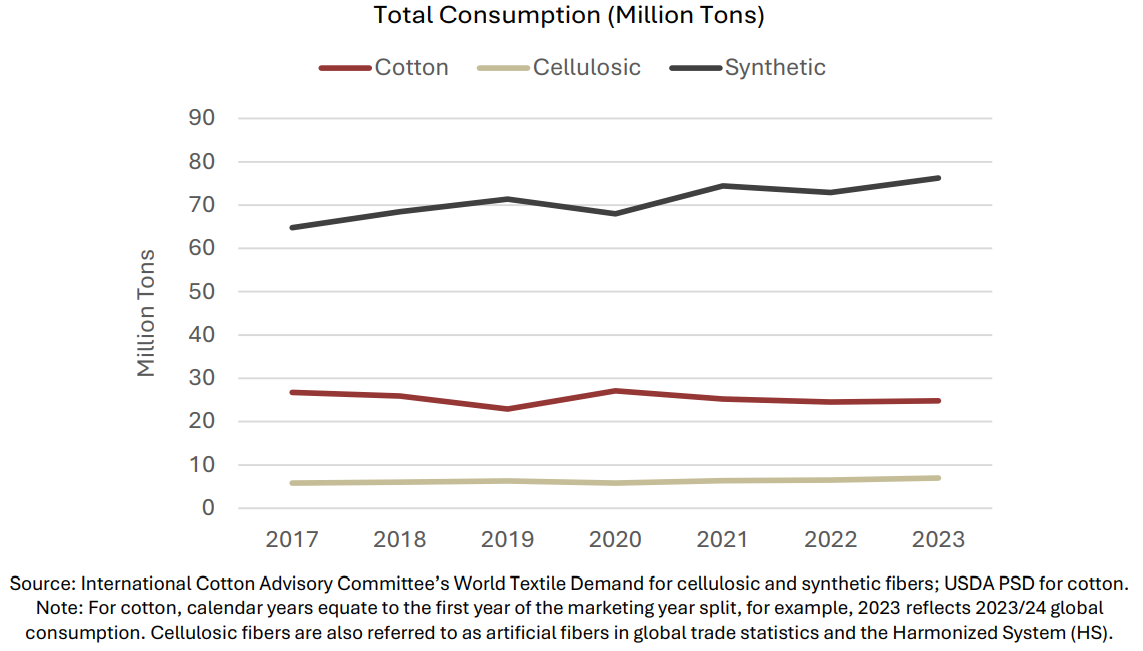Cotton’s share of global fiber consumption continues to decline, owing to substantial growth in the production and consumption of synthetic and cellulosic fibers (both also referred to as man-made fibers (MMFs)).* 2024/25 global cotton consumption is forecast at 115.2 million bales, near the 10- year average and more than 9.0 million bales below the record level witnessed 4 years ago. This is despite record global fiber consumption in calendar year 2023 as synthetic fibers are meeting the world’s growing demand. China has been the main supplier due to unprecedented capacity and competitive prices. Lastly, stagnant growth in cotton production has also pressured cotton consumption.
According to a report published by Textile Exchange last month, polyester has been the primary driver behind the growth in global synthetic fiber production. Production rose 8.0 million tons yearover-year (equivalent to nearly 37.0 million bales) to 71.0 million tons in 2023; annual production growth was roughly one-third of the world’s annual cotton consumption. Total synthetic fiber production was approximately 84.0 million tons (other fibers include nylon, polypropylene, acrylics, and elastane), showing that polyester makes up roughly 85 percent of synthetic fibers.

2023 global production of cellulosic fibers grew 500,000 tons (equivalent to 2.3 million bales) to 7.9 million tons, with rayon (also referred to as viscose) accounting for the majority at 6.3 million. Last week, the International Cotton Advisory Committee (ICAC) published their annual World Textile Demand report that reflected similar statistics, showing 2023 production of cellulosic fibers was more than 15 percent higher compared with 5 years ago. The steady production and consumption growth of both synthetic and cellulosic fibers contrasts with the stagnant, and at times, falling consumption of cotton fiber.
China has been the main driver of growth in synthetic and cellulosic fibers, with ICAC reporting the country produced nearly 70 percent of the world’s synthetic and cellulosic (i.e., MMF) supply in 2023. Expanded capacity and supply of polyester has boosted China’s dominance of the global textile industry, especially given polyester’s lower price relative to cotton (see here for comparison of China’s cotton price relative to MMFs). China’s MMF exports – including fibers, yarn, fabric, and finished products – reflect substantial growth, with total volume growing over 40 percent over the past 5 years. From October 2023 to September 2024, Chinese MMF exports were nearly 26.0 million tons (equivalent to 118.0 million bales), a level that exceeds recent global cotton consumption.
* For synthetic fiber, both staple and filament. Cellulosic fibers are known as artificial fibers.
Πηγή: Cotton: World Markets and Trade

